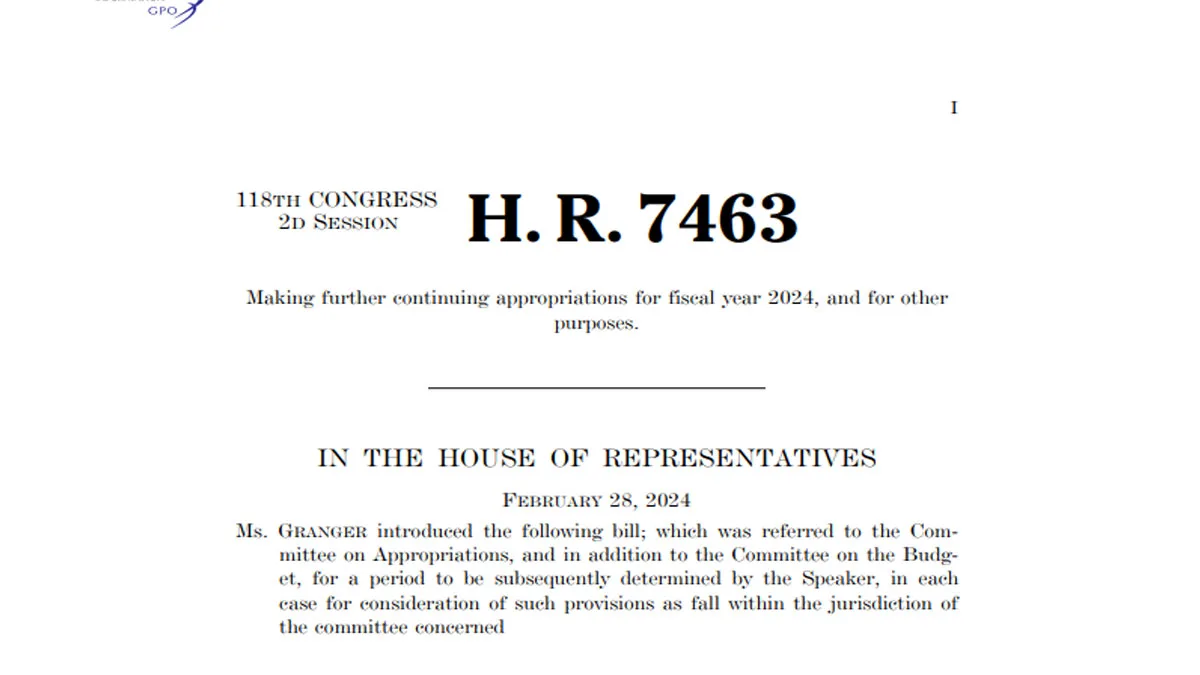In the ever-evolving landscape of legislation, HB7463 emerges as a pivotal piece of law that seeks to address pressing issues within its targeted domain. This legislative move is not just about the introduction of new rules; it’s about paving the way for significant changes that promise to impact individuals and organizations alike. As we delve into HB7463, our aim is to dissect its components, understand its implications, and navigate the intricacies it brings to the forefront. Whether you’re directly affected by this bill or simply keen on the dynamics of legislative development, understanding HB7463 is essential for staying informed and proactive in a changing legal environment.
Background and Overview of HB7463
HB7463 didn’t just appear out of thin air; it’s the culmination of extensive research, debate, and a clear identification of a need for change within its targeted area. The bill is a response to identified gaps in existing legislation, crafted with the intention of offering solutions to longstanding issues that have impacted the community it aims to serve. The genesis of HB7463 lies in the collective effort of policymakers, experts, and stakeholders who have recognized the necessity for legislative reform. Its development was guided by data, case studies, and a comprehensive analysis of potential outcomes, making it a well-founded legislative proposal aimed at fostering positive change.
Key Components of HB7463
At its core, HB7463 is structured around several key components, each designed to address specific areas within its legislative scope. These components are the pillars of the bill, outlining the legal frameworks and mechanisms it seeks to implement or amend. Here are the major elements of HB7463 that stakeholders should be aware of:
- Regulatory Adjustments: One of the standout features of HB7463 is its focus on updating existing regulations to better align with current needs and realities. This includes revising outdated standards, introducing new compliance requirements, and streamlining regulatory processes to enhance efficiency and effectiveness.
- Enhanced Oversight and Accountability: A significant portion of the bill is dedicated to establishing stronger oversight mechanisms. This aims to ensure that entities subject to the bill’s provisions are adhering to its mandates, with clear accountability structures in place for those failing to comply.
- Support and Resources for Affected Parties: Recognizing the challenges that new legislation can pose, HB7463 includes provisions for supporting those impacted by the changes. This may involve access to training, financial assistance, or guidance services to facilitate a smooth transition to the new regulatory environment.
- Innovative Solutions to Existing Problems: HB7463 doesn’t just seek to patch up old issues; it strives to introduce innovative approaches and solutions. This could involve leveraging technology, promoting best practices, or encouraging collaboration among stakeholders to address the challenges at hand.
Impact Assessment
The enactment of HB7463 is set to cast a wide net of influence across various sectors, heralding both challenges and opportunities for the entities it touches. The immediate impact is likely to be a wave of compliance activities as businesses, organizations, and individuals align their operations with the new requirements. Positive outcomes are anticipated in the form of enhanced protections, greater transparency, and a leveling of the playing field in competitive sectors. However, there’s a dual edge to such sweeping reforms; some may face financial strains due to compliance costs or operational disruptions during the adjustment phase. Long-term, HB7463 aims to cultivate a more robust, equitable, and efficient environment within its sphere of influence, potentially setting a benchmark for future legislation in related domains.
Comparative Analysis
When juxtaposed with its legislative predecessors, HB7463 distinguishes itself through its modern approach to addressing contemporary challenges. Previous legislation in the same area often lagged behind technological advancements and evolving societal norms, creating gaps that HB7463 now seeks to bridge. Unlike some earlier laws that adopted a more prescriptive stance, HB7463 leans towards flexibility and adaptability, allowing for a more dynamic response to future developments. This forward-thinking approach not only makes HB7463 more relevant in today’s context but also enhances its potential for positive impact compared to the somewhat static frameworks of the past.
Implementation Challenges and Solutions
The road to implementing HB7463 is not without its bumps. Among the foremost challenges is ensuring widespread understanding and compliance, a task complicated by the bill’s broad scope and the diversity of its stakeholders. Additionally, resource constraints for both enforcing authorities and those subject to the new regulations pose significant hurdles. Resistance from sectors that perceive the bill as burdensome or restrictive further complicates the implementation landscape.
Addressing these challenges requires a multifaceted strategy. Firstly, extensive education and outreach efforts are crucial to build awareness and understanding of HB7463’s provisions and the rationale behind them. Simplifying compliance through clear guidelines, toolkits, and support services can alleviate some of the burdens on affected parties. Investing in enforcement infrastructure is also vital to ensure that the bill’s provisions are not just theoretical but actively upheld. Furthermore, fostering dialogue and collaboration between regulators, industry players, and other stakeholders can help to refine implementation approaches and mitigate resistance by ensuring that all voices are heard and considered in the operationalization of HB7463.
Future Prospects and Updates
As legislation continues to evolve, HB7463 is likely to undergo various amendments and updates to better serve its intended purpose and adapt to changing circumstances. Stakeholders should stay informed about these developments through official legislative tracking platforms and industry analyses. Engagement in the legislative process, through public comments or direct representation, can also influence future amendments and the direction of related policy initiatives.
Conclusion
Understanding and engaging with legislation like HB7463 is vital for affected individuals, businesses, and sectors. By staying informed and proactive, stakeholders can navigate the complexities of new laws, leverage opportunities, and mitigate challenges. As we monitor the implementation and impact of HB7463, it is crucial to remain adaptable and prepared for future legislative evolutions that shape our regulatory and operational landscapes.









Leave a Reply